
Without question, the most well-known and frequently visited locations in Europe earned their reputations for good cause. London, Paris, Barcelona, and Venice all boast some of the greatest sights, food, and culture on the continent. Unfortunately, this frequently causes us to ignore some of Europe’s lesser-known cities. Rather, we plump for a crowd-pleaser or go back to our old favorites.
Fortunately, the time when getting to less-traveled European places was difficult is (largely) over. We are now closer to many smaller cities and lesser-known locations thanks to regional airports, FlixBus, and high-speed train links. Every one of these locations has an own personality, narrative, and possibly even some secrets.
These are some of the most underappreciated European cities, whether you’re looking for a sustainable city vacation, a weekend filled with history, or a cultural immersion.
Austria’s Graz

A top-notch food scene, traditional and modern architecture, and a sustainable city break
The second-largest city in Austria has managed to stay rather unknown. Graz is one of the most underappreciated European cities for a sustainable city break, maybe because there aren’t many direct flights.
It is set in southeast Austria, which is primarily farmland, and the fresh produce of the Styrian countryside makes it an ideal destination for foodies. Here, farm-to-fork is more than just a concept; it’s a way of life, and mouthwatering regional specialties and superbly prepared international cuisines are presented in hip, environmentally conscious locations. Graz’s residents and producers are especially enthusiastic about their family-run enterprises, local produce, farmers’ markets, social impact shops, and wines, making sure that Graz offers authenticity without requiring you to try
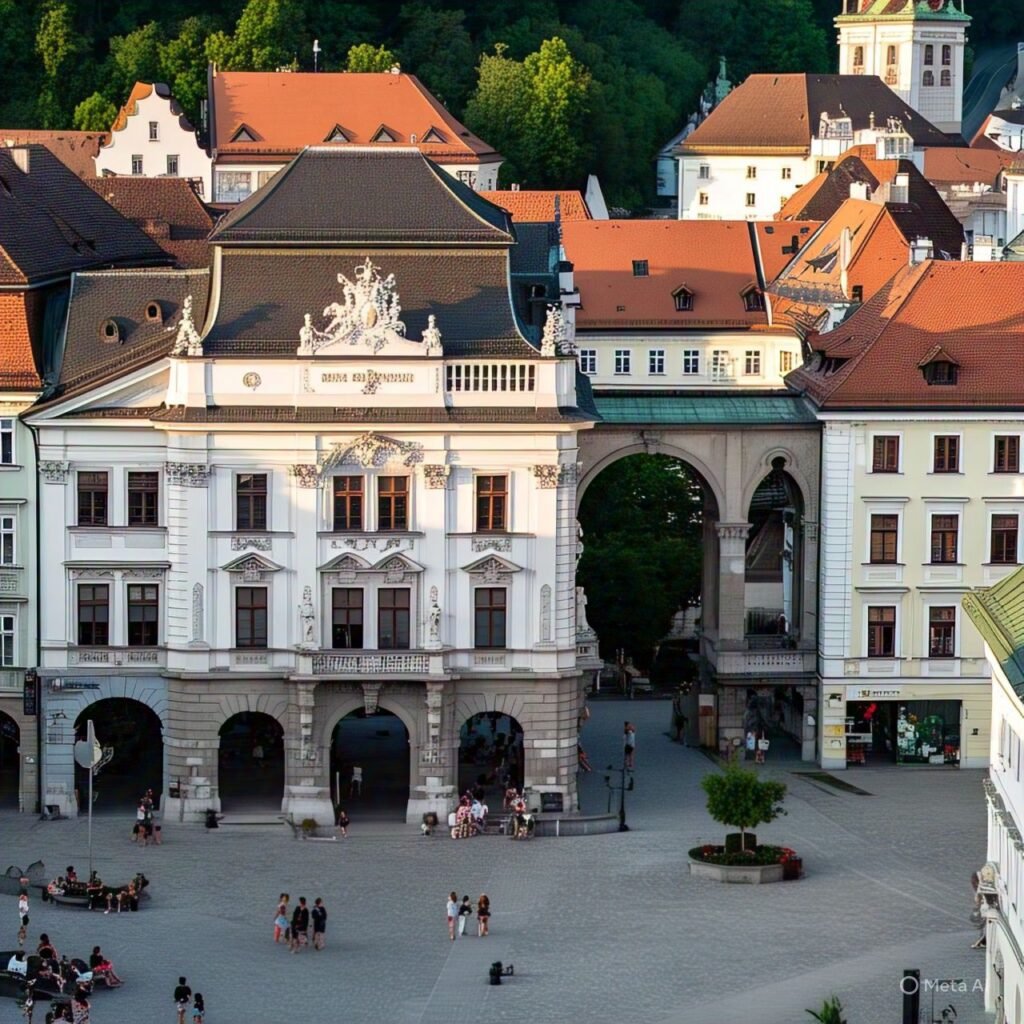
Graz’s Grazer Landhaus
It should come as no surprise that Graz, an Austrian city with two UNESCO designations, offers a wide variety of traditional Austrian activities, particularly during the summer months. Everything one might anticipate from a large European city is present in Graz’s historic core, which is recognized as a World Heritage Site. There are many courtyards in the Italian style. charming cobbled lanes from the Middle Ages. The ruins of a fortification on a hill. Then came the classic European favorites: imposing avenues, church spires reaching the sky, and frescoed facades.
Graz’s reputation as a “City of Design” is evident in the other side of town, which lies beyond the Old Town. An artificial island that floats serves as a tiny gallery. Presenting like a tentacled alien, a modern art museum is a bit out of place. Additionally, emerging neighborhoods showcase the best of Europe’s lesser-known areas. Graz is the ideal sustainable city getaway when you include its innovative cycling concerts, convenient access to the nearby Styrian wine regions, and what is arguably the best collection of restaurants in the nation.
Belgium’s Mechelen
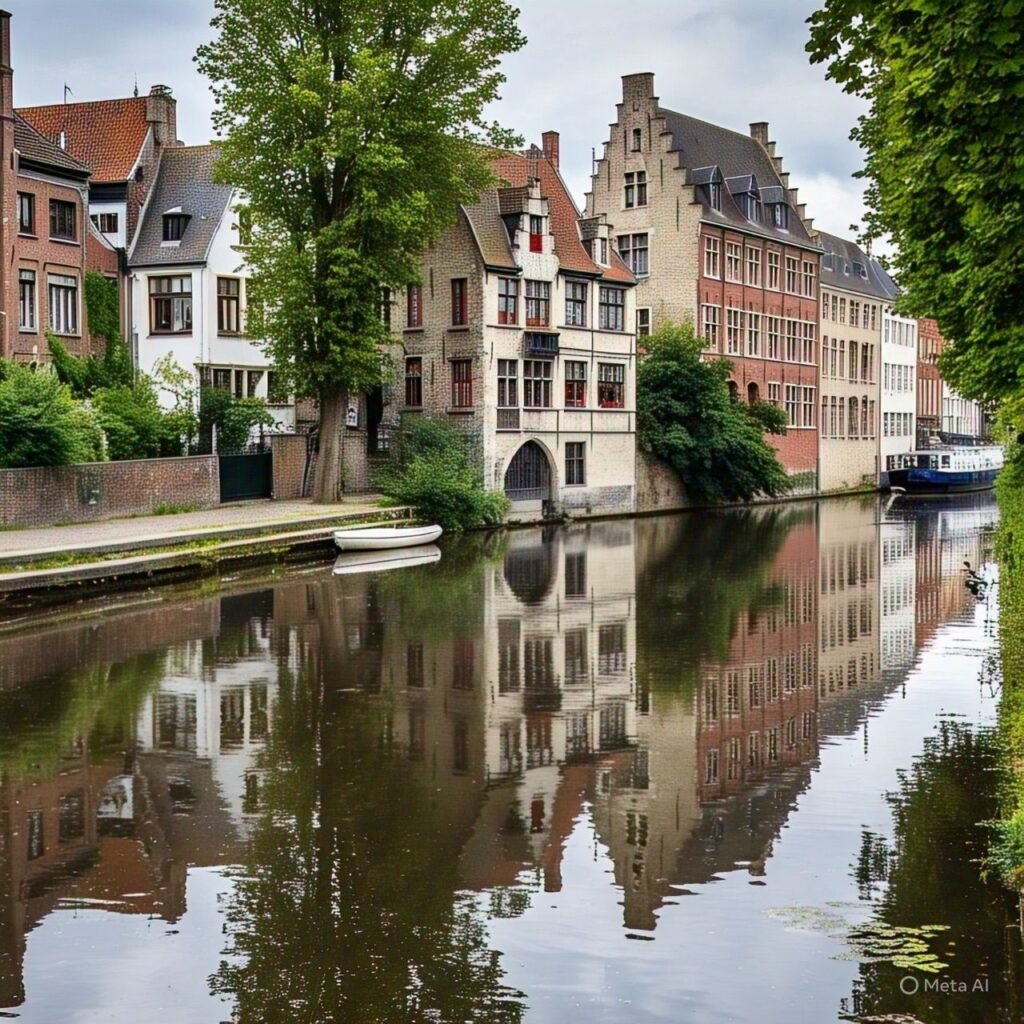
Belgian charm, a growing culinary scene, and Burgundian history without the crowds
Perhaps Belgium’s most underappreciated city break is Mechelen. Indeed, Ghent is a true grande dame, Brussels combines bureaucracy with craft beer bars and top-notch museums, and Bruges boasts the (packed) canals. However, Mechelen’s more subdued offering of all the classic Belgian experiences—breweries, canal boat excursions, and plenty of chocolate are still available—along with its less crowded and more relaxed streets make it the ideal city getaway for anyone wishing to experience a Belgian city without having to contend with throngs of other cruise tourists.
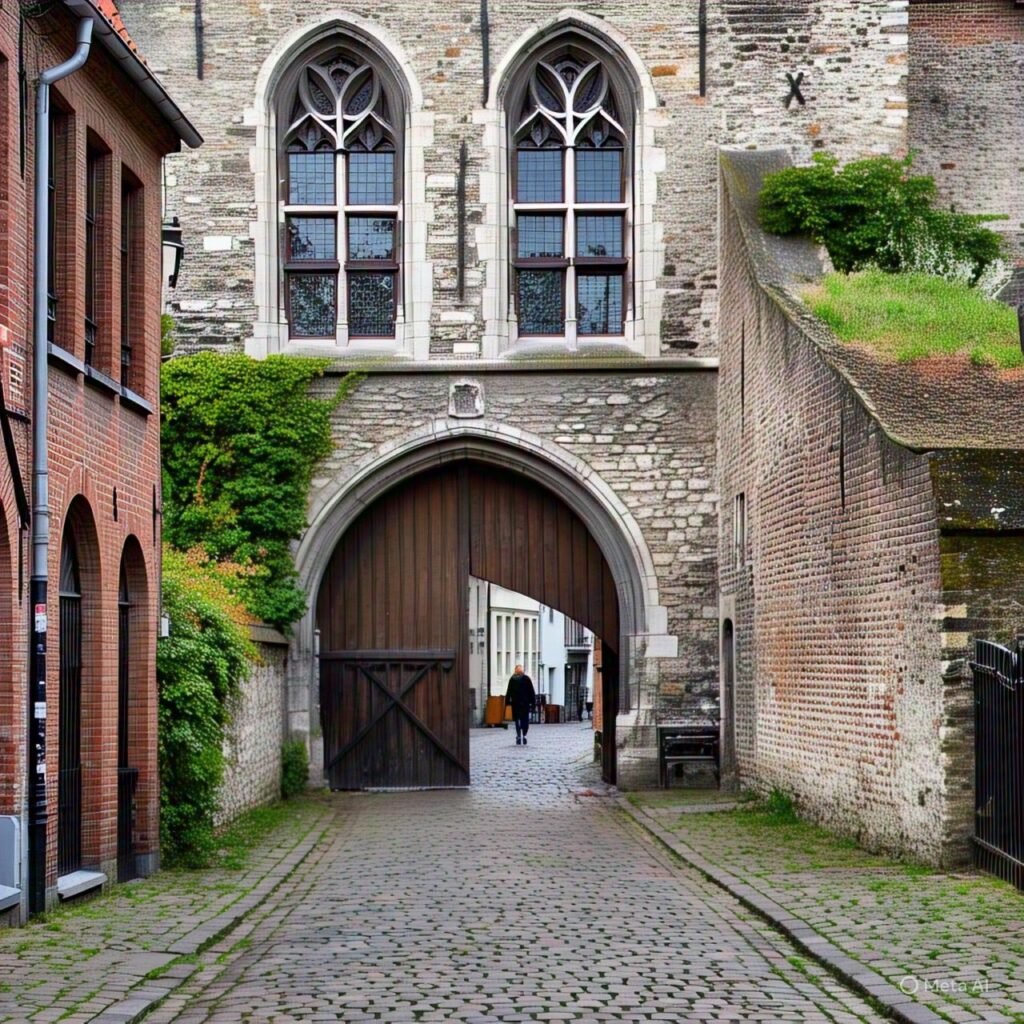
The only surviving medieval gate in Mechelen is Brusselpoort.
However, Mechelen’s fascination extends beyond its understated allure. There is a wealth of history in this city. Mechelen gained considerable prominence during the Burgundian era and boasts three picturesque town halls, a serious Imperial history because Margaret of Austria loved and resided here, and the towering St. Rumbold’s Tower, which, despite never having been finished, still offers views of some of the Belgian cities mentioned above. What’s the nicest thing about these Mechelen activities that have defined history? They all make the Burgundian era “live” again.
In addition to helping cooks all around the city make dishes, chocolates, and even beers using just the ingredients discovered during digs from the 15th and 16th centuries, food archeologist Jeroen Van Vaerenbergh dug up a cesspit in the palace’s gardens. You can get an inside look at Margaret’s private courtyard with a guided tour. Housed in the Renaissance Hof van Busleyden Palace, the city’s main museum reopened in 2024 as an engaging and dynamic venue. Or simply take a riverboat cruise and enjoy the sights with Gouden Carolus from the nearby Het Anker brewery, which is located in the old beguinage’s beer-brewing hospital.
Italy’s Ravenna

Byzantine mosaics, numerous UNESCO buildings, and the superb food of Romagna
It’s difficult to become the best in an Italian city, let’s face it. Travelers are drawn to Venice, Rome, Florence, Milan, and Naples, and that’s before you take into account the regional capitals and undiscovered treasures of Italy.
However, Ravenna, located in Emilia-Romagna, is one of the nation’s real hidden gems and, in some ways, continues to be one of Europe’s most underappreciated cities. Some of the world’s best-preserved Byzantine mosaics can be found in the city, which was once the capital of the Western Roman Empire. These mosaics are not your typical earthy pastel-toned tile art that you would typically associate with the Roman era; instead, they are vibrant blues, greens, and golds that have been used to decorate everything from church walls to Basillica ceilings.

The Byzantine mosaics at Ravenna’s Basilica di San Vitale
I made the error of going to Ravenna as a day trip from Bologna when I first came, but after coming back a few times, I can assure you that there is much more to enjoy here than what a day would provide.
History and art enthusiasts will be astounded by the city’s highlights, which include a collection of eight monuments that make up the city’s UNESCO World Heritage Site designation: the Basilica di San Vitale’s amazing tiled ceiling; the nearby fifth-century chapel, which is equally brilliant; and the numerous churches with intricate mosaic decorations. Even the crypt of the Basilica of San Francesco, which is currently underwater and contains fish, has antique mosaics.
But it’s not all antiquated; the world’s largest collection of current designs can be found in the contemporary Mosaic museum. With all of Emilia-Romagna’s delectable cuisine, foodies are equally spoiled. You can easily reach the Adriatic shore on a hot summer day, which is perfect for lounging on the Emilia Romagna Riviera.
Georgia’s Tbilisi

An eclectic underground energy, must-try food, and a potpourri of architecture
Georgia’s capital, Tbilisi, continues to be one of the most overlooked towns in Europe. However, a growing desire for the county’s finest cuisine is beginning to attract tourists.
The history of the city, which is among the oldest capitals in Europe, is both intriguing and, at times, difficult. The valley has been traversed by numerous invaders, religions, and civilizations since the fifth century AD. A fascinating fusion of architectural styles is the result of the influence of the Persians and the Russian Empire in particular.
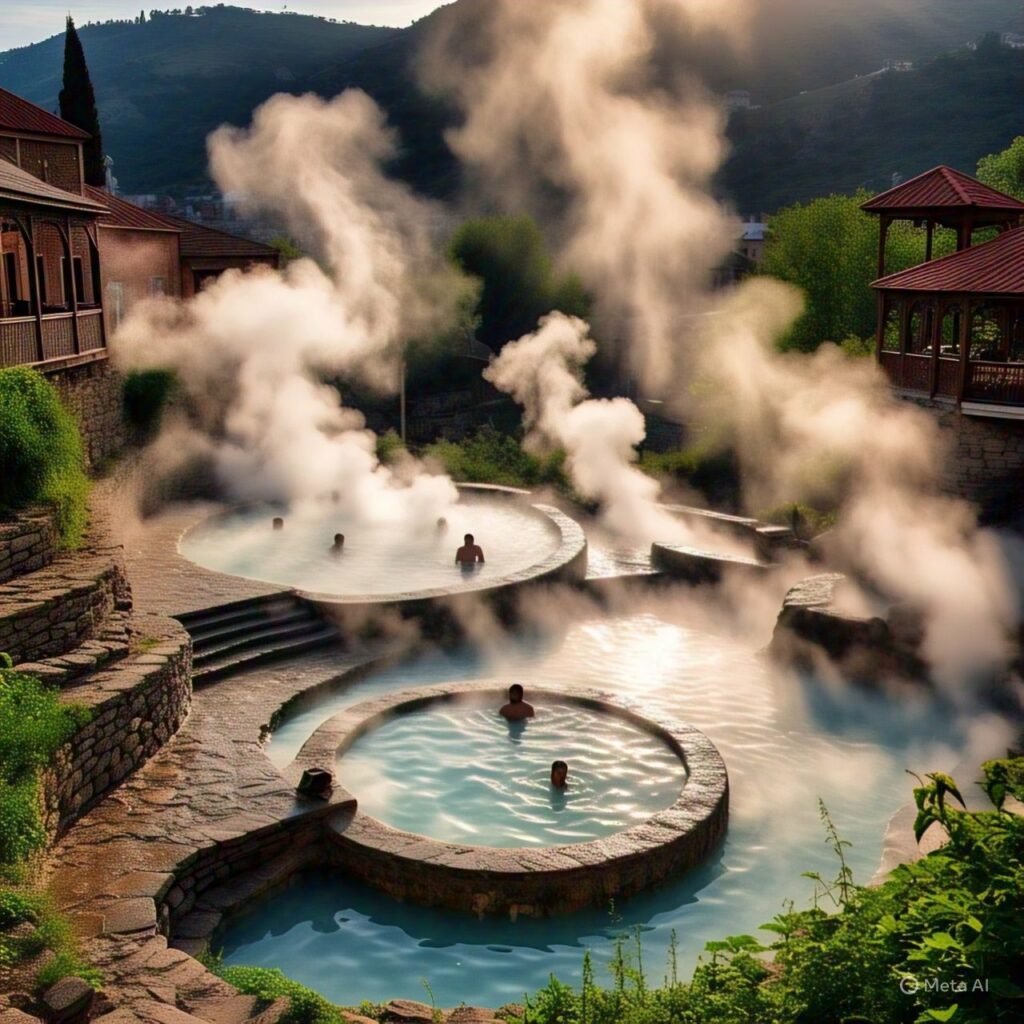
A bath in sulfur in Tbilisi
However, Georgia is paving its own way these days. The city is a hive of activity due to the strong (people’s) desire to join the EU and the growing emphasis on a more progressive society. The different styles and eras captivate you, whether you’re appreciating the tile work—and taking a soak in the old sulfur baths—or marveling at Eastern Orthodox cathedrals, taking in the massive monuments from the Soviet era, or walking across futuristic river-crossing bridges.
Then there’s the world’s best and most underappreciated nightlife. In the evenings, wine bars open. Cocktails from hidden speakeasies get you moving. Then, well into the night, you are drawn in by pulsating and forward-thinking underground electronic clubs. To the extent where a die-hard fan of electronic music would laugh when you referred to this city as one of Europe’s most underappreciated.
Naturally, talking about Tbilisi would be incomplete without mentioning its cuisine and wine. Georgia is home to the world’s oldest winemaking region, and its grapes have been producing quality wine for around 8,000 years. The abundance of food on the table, which includes dishes like cheese-stuffed Khachapuri bread and twisted-dough Khinkali dumplings, makes eating a convivial event. There are many lesser-known locations outside of the nation’s capital. Specifically, the breathtaking mountain ranges, extensive wine history, and the delectable cuisine.
Spain’s Cordoba

Three World Heritage Sites, hot summers, and the Andalusian table of joys
Can Cordoba truly be regarded as one of Europe’s underappreciated cities, given that it has the most UNESCO World Heritage Sites on the continent, at least until recently?
Yes, I would say. The sheer quantity of Spain’s top tourist destinations serves as proof. Because of this, Cordoba is frequently ranked significantly lower on most travelers’ lists than cities like Barcelona, Seville, Granada, and even Madrid.

At the Cordoba Festival of the Patios, vibrant plant pots
However, visitors will be rewarded with an incomparable cross-religious architecture or time capsule. A voyage of creative design greets you with three UNESCO designations—it was four until two were folded together.
The Mosque-Cathedral is the first. It was saved from the fate of many Islamic structures in Spain when it was built as a mosque in the middle of the eighth century. In the 13th century, the mosque was transformed into a church instead. As a result, one of the most distinctive houses of worship in the world has been established. Second, the Caliphate City of Medina Azahara is located on the city limits. The ruins of an almost extinct city from the Umayyad era can be seen at this remarkable archaeological site.
Last but not least, families open their private courtyards for the Festival of the Patios, a springtime festival. The owners of these flower-filled gardens are proud to share their local heritage. Even though it’s not quite a hidden gem in Spain, you’ll fall in love with this underappreciated European city if you add in the perfect spring and autumn sunny days (avoid the hottest part of summer, as it’s relentless), the delectable salmorejo (a cold soup), and the fiery passion that permeates Andalusia.
Bosnia and Herzegovina’s Sarajevo

Sand-heated coffee, the Old Bazaar, a somber past, and a variety of religious buildings
One of the most underappreciated European nations and one of my favorite undiscovered treasures is Bosnia and Herzegovina. Furthermore, it is still one of the least frequented places on the continent, despite the fact that it may seem odd to characterize an entire country in that manner.
Considering how much attention Mostar, and especially the Ottoman bridge, receives, this may seem unbelievable. But a large portion of this is from Dubrovnik day visitors and cruise tourists.
There are far fewer tourists in Sarajevo, the nation’s capital. Considering that the city is among the most fascinating in Europe, I think it’s criminal. The city has a significant soul, even though it may not have the same immediate picturesque appeal as Mostar, despite the fact that the mountainous setting speaks for itself.

Inside Sarajevo City Hall: Specifics
One of the rare locations in the world where you can find mosques, synagogues, and churches standing so near to one another is this Ottoman-era building, which is today decorated with a hodgepodge of Austro-European architecture. However, important historical events have occurred here, thus the city has not always been harmonious. Among the most well-known are the Siege of Sarajevo and the assassination that led to World War I and the creation of Yugoslavia.
I am still frequently asked if it is safe to travel to Sarajevo, even though this is, in some cases, relatively recent history. Now that its 2023 candidate status for EU membership is assured and religious differences have diminished, if not completely vanished, I consider it to be as safe a place as any and one of the most rewarding underappreciated cities in Europe.
In addition, it’s only captivating, captivating, and welcoming. Sarajevo is a city that will take you on a sensory adventure, whether you’re enjoying a sand-heated Bosnian coffee in tiny tea houses, enjoying a beer in a bar hall covered in wood, shopping in the Old Bazaar, taking in the stunning Town Hall, or examining those bullet holes in the wall that mark the city’s history.
To fully experience everything, I would strongly advise staying here for a few days. It will take some time to view and process just the Crimes Against Humanity and Genocide Museum. A historical guide can be helpful for the entire city, and I’d strongly suggest Nedzmina, whom you can follow on Instagram.
Germany’s Dresden
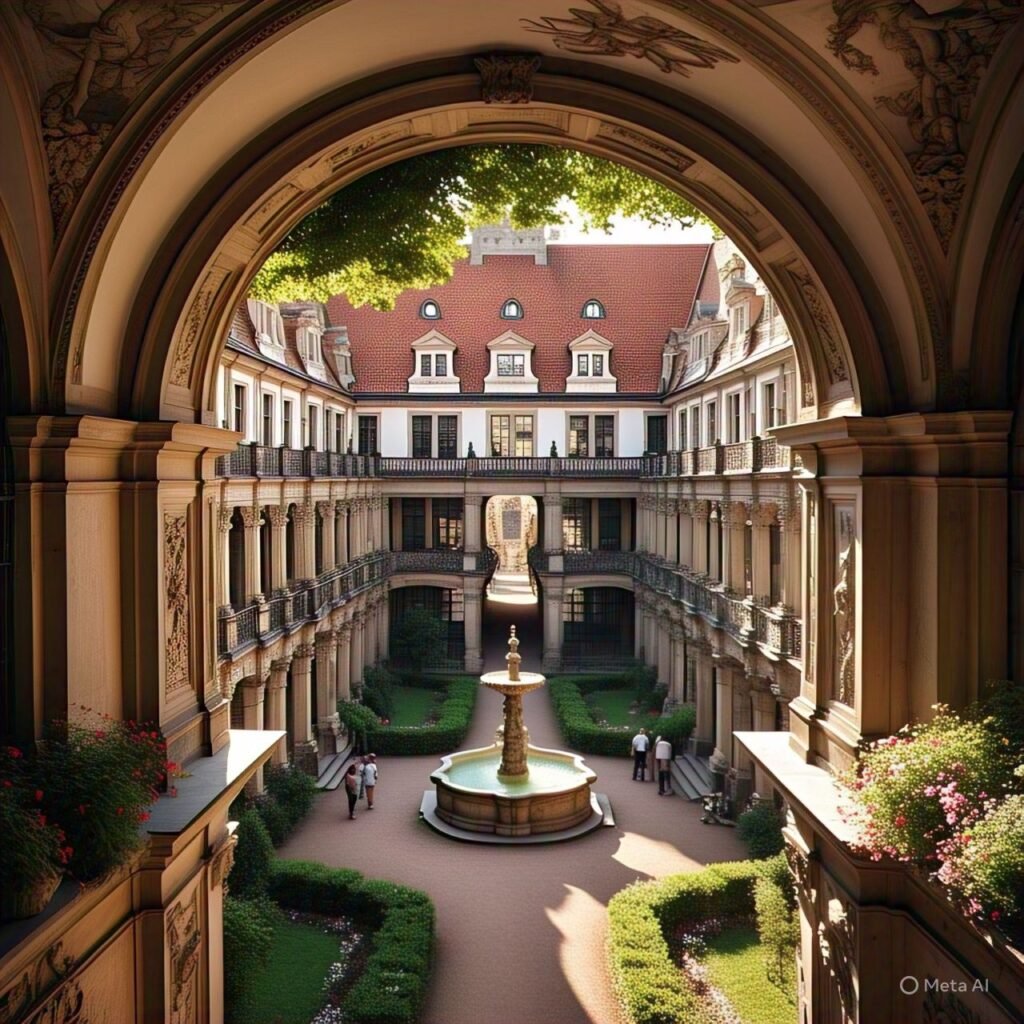
Riverbank walks, Baroque and Rococo buildings, and inventive cuisine
Dresden, the capital city of Germany’s Saxony province, is a shockingly underappreciated European city, given its prominence in history.
The Baroque and Rococo architectural treasures scattered around the historic center are easily accessible on foot. Highlights include Zwinger, a lavish castle complex, and the Dresden Frauenkirche, a towering Lutheran cathedral with a spectacular dome.
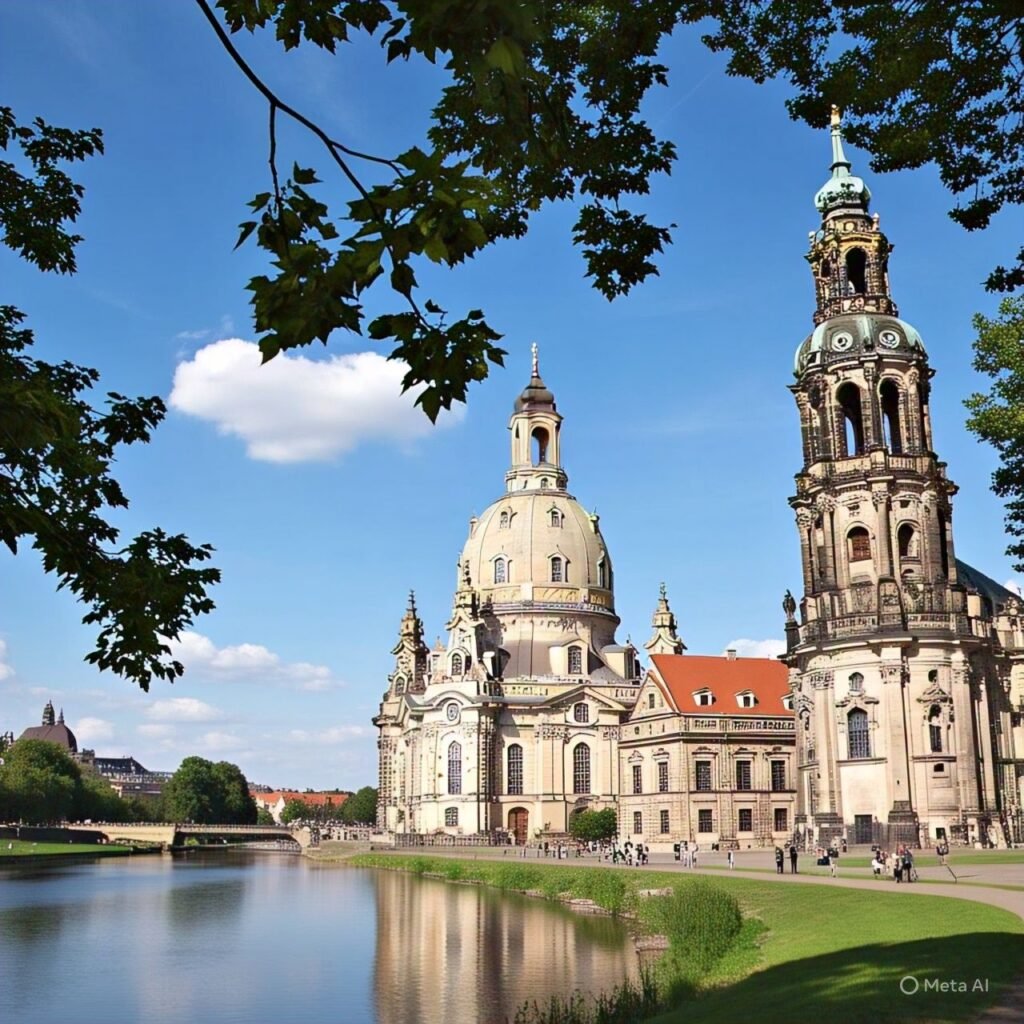
Frauenkirche Dresden
Despite the fact that WWII severely wrecked a large portion of the city, substantial restoration work has brought Dresden back to its former splendor. Since Saxony is referred to as the “State of the Arts,” there are plenty of galleries, museums, and inventive dining options.
Any time of year is a fantastic time to visit the city, but late November or early December is a cool yet joyous treat. Dresden is also one of the top winter travel destinations in Europe because of its eleven distinct Christmas markets.
There are many locations outside of the city limits that are ideal for day visits. The breathtaking Bastei rock formations are located in the Saxon Switzerland National Park, which is on the border with the Czech Republic. A peaceful excursion is offered by the vineyards along the Elbe River. Leipzig, a former industrial city that has been transformed into a funky one, will also keep you entertained. In actuality, Saxony, Germany has a lot of underappreciated tourist attractions.
Poland’s Gdansk
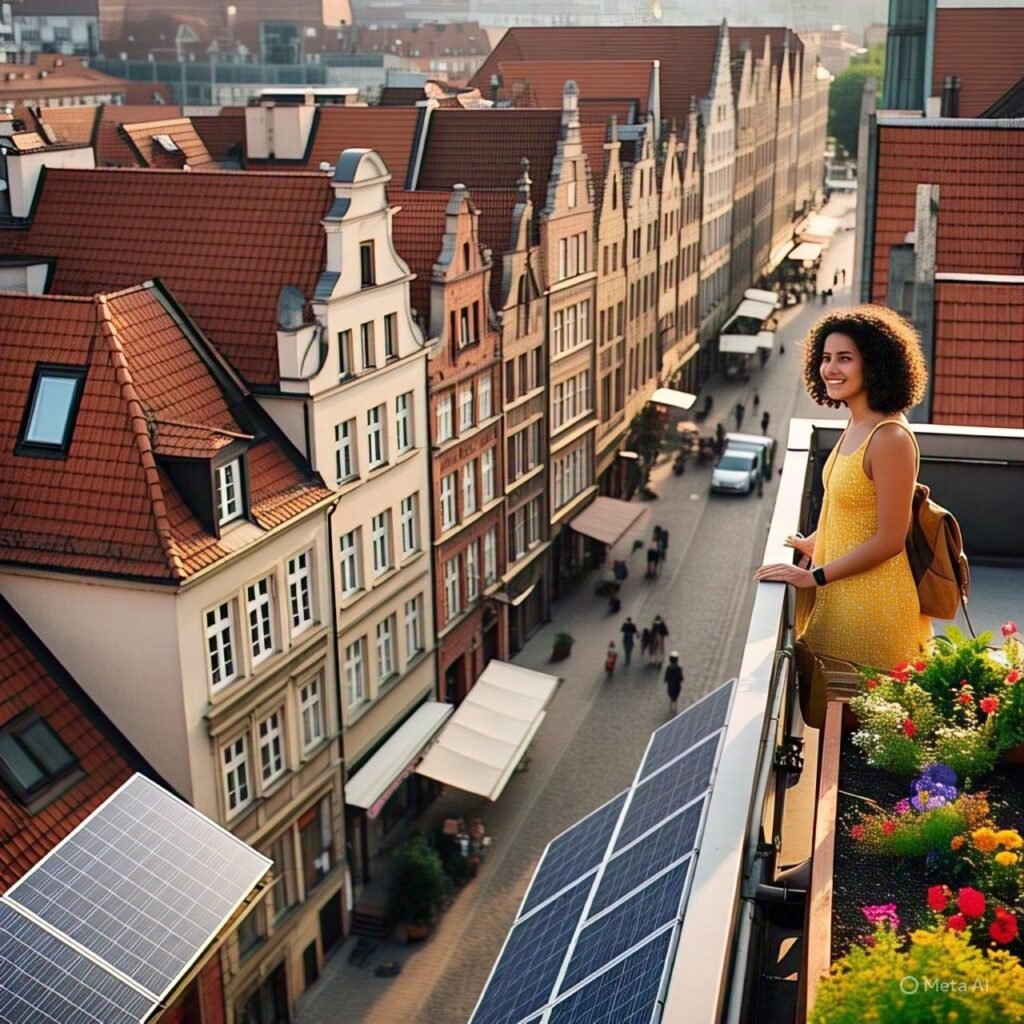
WWII and Solidarity history, one of Europe’s biggest and most beautiful historical centers, and a reasonably priced nightlife
It’s surprising that Gdansk is still regarded as one of the lesser-known European cities considering its significant historical significance. For a city-cum-beach vacation, Gdansk, which is just a short distance from the Baltic Sea, can be coupled with Sopot, which is on the beach. However, thus far north, the water never becomes very warm.
One of Europe’s major historical centers is located in the city itself, which was severely destroyed in the final years of World War II. The Dutch-influenced building, which has been meticulously restored, gives it an aura of Amsterdam.

The charming streets of Gdansk
Cobbled alleyways, charming corners, and one of the biggest brick cathedrals in the world—which can accommodate 25,000 people—will transport you to a medieval fantasy. There are also a number of striking entrance gates set into what would have been the Old Town walls.
You can go to a Milk Bar for reasonably priced traditional food. These inexpensive, subsidized eateries first appeared during the Soviet era. They now operate as a privately held company. There is also a fantastic nightlife after dinner. Fortunately, compared to other stag party locations in Poland, it feels more chic and modern.
Finally, don’t overlook the views from the tower of St. Mary’s Church. You will be left wondering how Gdansk, one of the most underappreciated places in Europe, can remain so after gazing out over the stacked pastel-colored buildings from above.
Italy’s Mantua

Renaissance mansions, a magnificent opera house, and excellent cuisine
One of the best city breaks in Italy is Mantua, sometimes called Mantova. This 50,000-person city in southern Lombardy, near the Emilia-Romagna regional boundary, proudly displays its historical significance. I’ll never understand why this city is still so underappreciated in Europe; it satisfies all of the fundamental Italian requirements in terms of culture, food, architecture, and history.
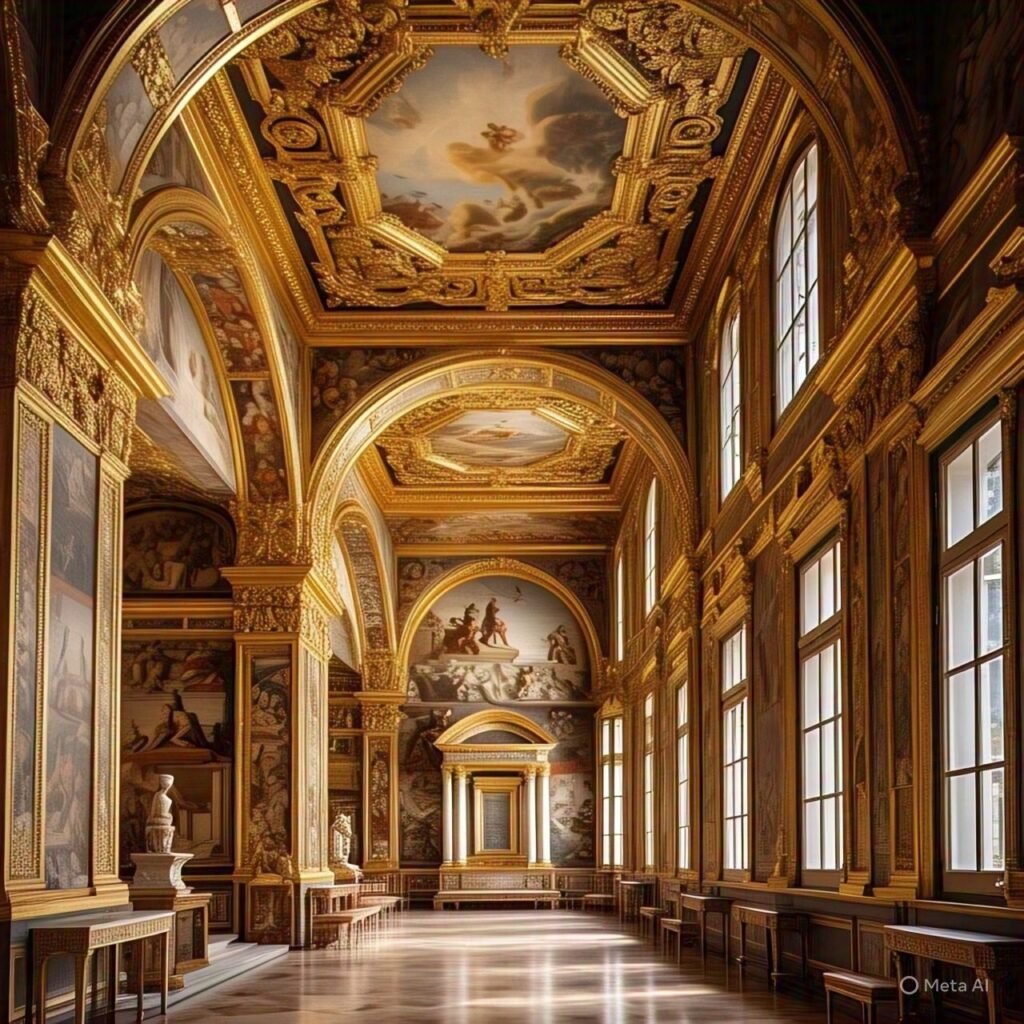
Ceilings in the Gran Palace Te, Mantua, are painted and adorned with gold.
The city has made a significant contribution to the opera scene and is rich in art, culture, and music. The Teatro Bibiena, a little but exquisitely designed theater that is among the most exquisite in Europe, is a superb example of this.
The Gonzaga Dynasty, which ruled Mantua from the fourteenth to the early eighteenth centuries, is responsible for the city’s thriving architectural scene. With almost 600 rooms, their estate, the Palazzo Ducale di Mantova, is a huge majestic complex that comes together to form one of the biggest residential structures in Europe. It’s a fast-paced tour of luxury, artwork, and frescoed ceilings, but just a few are accessible to the general public. In Renaissance painting, this is a true show.
Numerous additional jewels are also inside Mantua’s boundaries. During a sunset boat over the lilies, the three man-made lakes are breathtaking. An extravagant big hall event is the Te Palace. Of course, there is the food, which was inspired by the greatest dishes from Emilia Romagna as well as the risottos of Lombardy. It’s a great side excursion from one of the showstoppers, and there are convenient train connections from Verona, Venice, and Milan. However, this underappreciated location is worth much more than a day trip.
Portugal’s Évora

Roman ruins, a heartland retreat, and mouthwatering wines straight from the vines
The capital of Portugal’s Alentejo region, Évora, is surrounded by vineyards, farmlands, sun-drenched plains, and little whitewashed villages.
Though many tourists’ bucket lists for Portugal include Porto’s excellent eateries and Lisbon’s trams and views, this modest provincial city has remained one of Europe’s more underappreciated places. Fortunately, it’s unlikely to be disturbed because there aren’t many must-see sights and people live more slowly.
However, it doesn’t mean there aren’t enough sights and activities to enjoy. There is still proof that the Romans were present in this area until the third century AD. Along with an aqueduct and the remnants of the Roman Baths, the majority of the columns from the Roman Temple of Évora survive proudly intact. As the name suggests, the “Chapel of Bones” is a more gruesome event.
The city was inscribed into the UNESCO World Heritage List in 1986, and savvy tourists frequently hail it as a kind of outdoor museum. The remainder of the city’s architecture is influenced by Moorish, Gothic, Baroque, and Portuguese Manueline styles. Choose a history hotel, like the Pousada Convento de Évora, for a distinctive stay.
However, the wine is one of the primary reasons to visit Evora. One of Portugal’s most renowned wine areas is Alentejo, and you don’t have to go far from the outskirts of the city to taste it directly from the barrels in the basement.
Just a short drive from Évora are upscale wine hotels and lodges, like L’AND Alentejo, which is considered to be among the best. You will be enchanted by the Alentejo after spending a long weekend there, returning home a more rested, rejuvenated, and wine-filled version of yourself.
Slovenia’s Ljubljana

Canals, coffee culture, a pedestrianized center that is picture-perfect, and oddball shops and bars
Ljubljana was regarded as an underappreciated European destination for a long time. But that has all changed as tourists have come to appreciate Slovenia’s verdant lungs, serene lakes, and mouthwatering wines.
Ljubljana, the nation’s well-formed capital, is at its center. A pioneer in the removal of automobiles to create a pedestrian-only center, the canal banks lined with bars, the hill crowned by a castle, and the buildings with their vibrant facades are all delightful to explore on foot.
A night out here is also a lot of fun because of the large number of university students and the trendy coffee and wine bars in the center. You’ll probably calm down, meet new people, and discover your inner peace. The gentler pace of Ljubljana, which results from a less tourist-heavy city break, is one of its biggest attractions.
Compared to the major European cities, Ljubljana is one of the more underappreciated ones, but this has changed recently. I advise concentrating on hotel stays outside of the busiest times or day-tripping in from other locations, such the Vipava Valley or Lake Bled in the summer, as Airbnb is contributing to a significant housing crisis here due to the increased amount of tourists and the lack of accommodations. Since spring is a great time to travel, Ljubljana is among the top European destinations in April.
City of Luxembourg
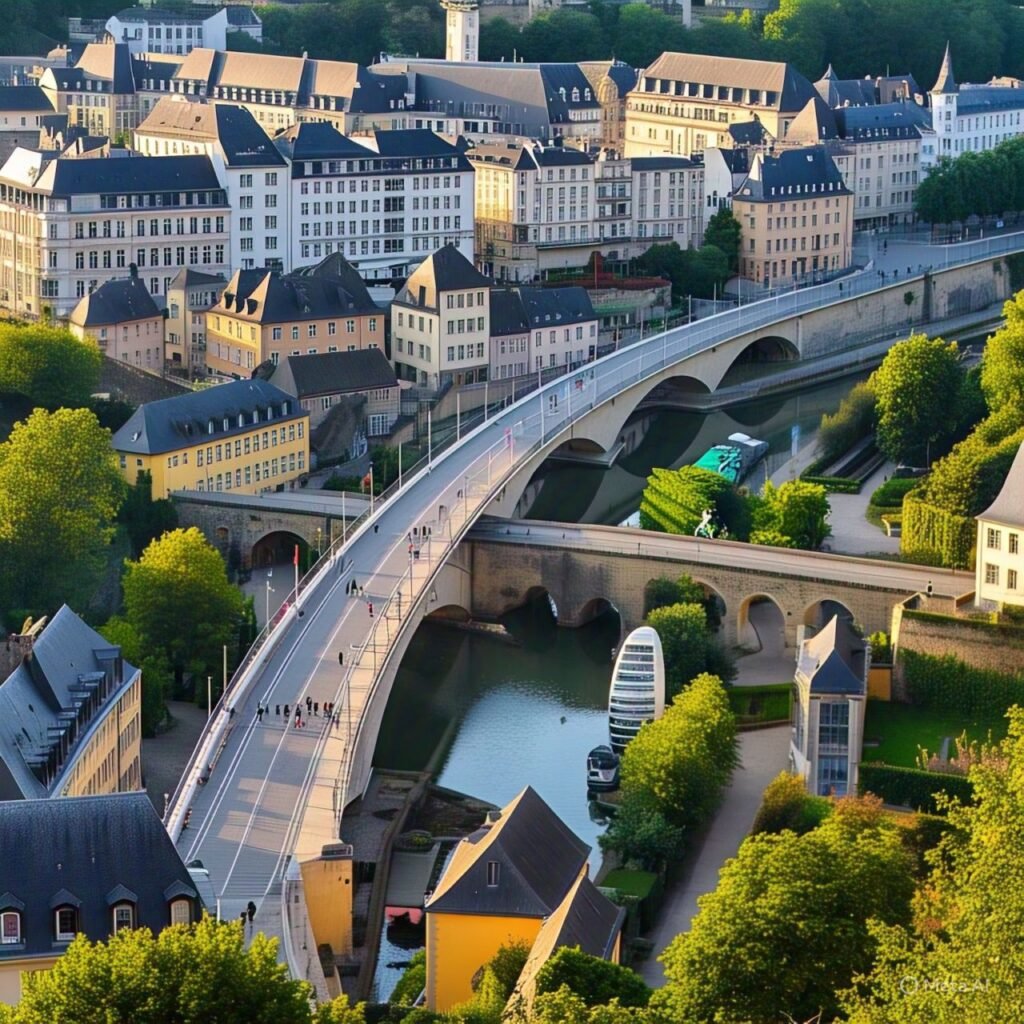
Cobblestone streets, a castle, a two-story city break, and numerous museums
Is it the exorbitant costs? Or the notion that a city that serves as a financial center is sterile? In any case, I think the capital of Luxembourg is one of the most underappreciated places in Europe.
Luxembourg City is a multifaceted joy that dates back to the Middle Ages and is far from being only about finance and business. The city was small at first. The City of Luxembourg started off as a castle on a rocky ledge in 963 and expanded during the ensuing centuries.
Although that extension is lovely, the lower portion of the city, the Grund, which encircles the Alzette River, offers the most breathtaking views and a charming atmosphere.
Bring a camera during the day, but after nightfall, bring dancing shoes and a thirst for water. The most striking location in the city is the Bock Casemates, a castle with underground passageways that should reopen in 2023 following repairs for water damage.
Despite being one of the smallest nations in Europe, Luxembourg boasts a surprising number of museums—I’ll simply list a handful here. Some of the Luxembourgish paintings in the National Museum of History and Art’s collection may be competitors to the Flemish. The Casino Luxembourg is a great place to see modern art. Naturally, there is also The Bank Museum; after all, what else would you expect?
Sweden’s Stockholm
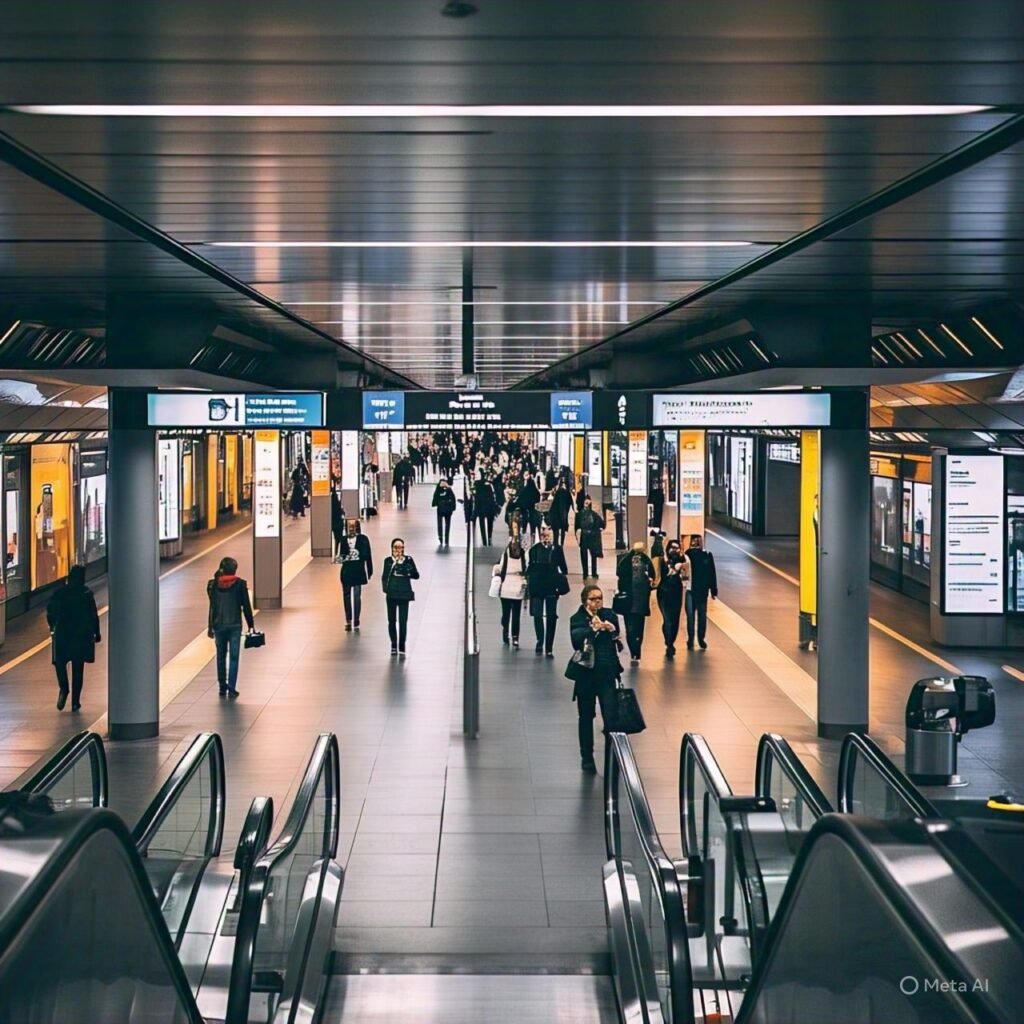
Wanderings along the canal, visits to museums, medieval architecture, and a metro art gallery
My all-time favorite Scandinavian capital, Stockholm, is especially beautiful in the summer. I believe that Stockholm doesn’t receive as much attention as it ought to these days, even though Copenhagen appears to have claimed the center-Nordic stage for a city break (the museums alone make it worthwhile) and Tallinn is securing the emerging Baltic slot.
Given everything that is available, I would argue that it remains one of the more underappreciated European cities as a result. Naturally, winter brings a blanket of snow and cozy fireplace emotions, but in my opinion, Stockholm is at its best when the sun is shining.

Stockholm’s Gamla Stan
Everything appears brighter and more saturated under the sun’s glare, whether you’re walking or kayaking along the city’s canals, cycling amid bar patios in the sun-kissed center, or strolling through the historic Old Town (Gamla Stan) to admire the colorful facades.
Take a tour of the Royal Palace. Go to the top-notch museum of photography. See the best-preserved ship in the world when you enter the maritime-focused Vasa Museum. Visit the ABBA museum and get your groove on. After that, enter the underground Metro system, which is effectively an art gallery, if it’s raining or even if it’s not. Artists have transformed the stations into vibrant canvases here, underground. It’s a fantastic inexpensive pastime in Stockholm, and you’ll quickly stop traveling from point A to point B and instead divert to other stations.
Manchester, United Kingdom

A vibrant industrial past, an impressive collection, and top-notch music and nightlife
Manchester is a great alternative to London, which is frequently overlooked as an England weekend escape destination. Manchester is smaller, but you won’t be able to explore all of London in a few days. It is a feasible stand-alone city break in England because of its well-connected airport, trams, and free city center buses.
However, it continues to be regarded as one of Europe’s underappreciated cities by many foreigners. When most people think of Manchester, they picture shopping, drinking, and Oasis singing “Wonderwall,” but the city is much more than that.Manchester’s John Rylands Library

Manchester’s John Rylands Library
The musical legacy is vast, of course. The Smiths, the Stone Roses, and the Gallagher brothers are among the artists that call this place home, but this may not be enough to draw in younger tourists.
Instead, concentrate on the constantly changing art scene, the numerous free museums, the theaters, and the capital-rivaling cafes. Naturally, there are also top-notch traditional pubs, hip restaurants like Mackie Mayor, and clubs that stay open late.
Don’t miss the free admission to the Museum of Science and Industry, the canvas-rich Manchester Art Gallery, and the John Rylands Library, one of the most exquisite libraries in the world. Visit the Pankhurst Centre or the People’s History Museum to learn more about Manchester’s illustrious history of social justice activism. The latter is very personal since it centers on the suffragettes’ fight for women’s suffrage.
Italy’s Trento
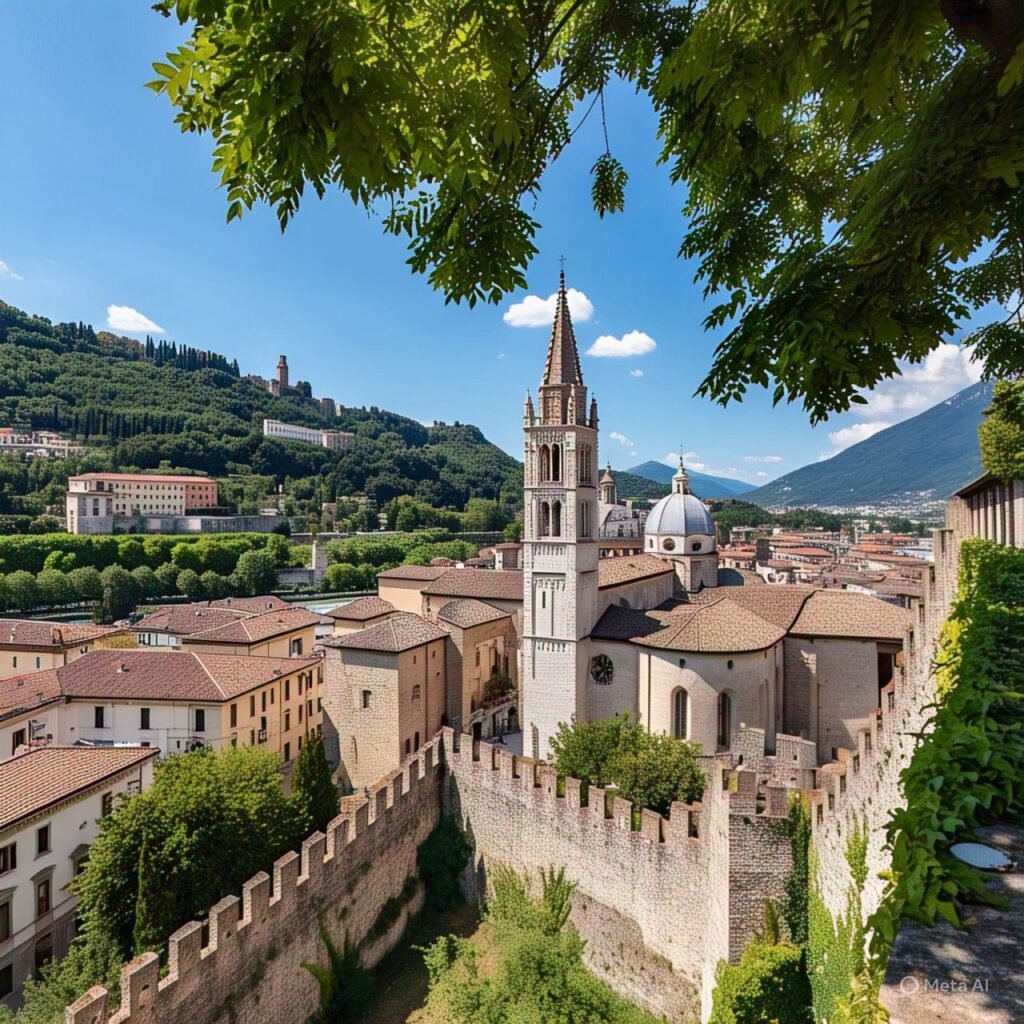
A historic castle, sparkling wine, frescoed façade, and an Alpine city break
A city getaway with an Alpine spirit, Trento is surrounded by picturesque lakes, rocky snow-capped peaks, and lush mountains. One of the most underappreciated cities in Europe, the capital of the northern Trentino region, is truly the ideal weekend escape.
The streets are cobbled and immaculate. The bars and restaurants are sophisticated. The combination of Austrian and Italian cuisine is interesting. Additionally, the frescoed facades are a fantastic match for the mountainous surroundings. Historical attractions include the medieval cathedral and the magnificent 13th-century castle known as Buonconsiglio Castle.
There are other good museums as well. The Piedicastello Tunnel exhibit, located inside a former under-mountain pass, and MUSE, a surprisingly interesting science environment, are especially worth a visit. Don’t overlook the Orrido di Ponte Alto, a rock-cut canyon on the outskirts of the city. Watching the water crash in front of you will give you a heart-pounding experience from the observation platform below.
A special mention should go to Trento Doc, the region’s flawlessly fizzy sparkling wine. The region produces this classic-method sparkling wine, which is considered to be among the best in Italy.
The Dolomites are undoubtedly the most well-known feature of the stunning rest of the area. However, Trentino offers a plethora of more destinations. This is a truly green retreat, from the castles and apple-lined valleys of Val di Non to the lakes of Valsugana, where you may SUP over sparkling wine bottles that are aged deep below.
Bulgaria’s Plovdiv
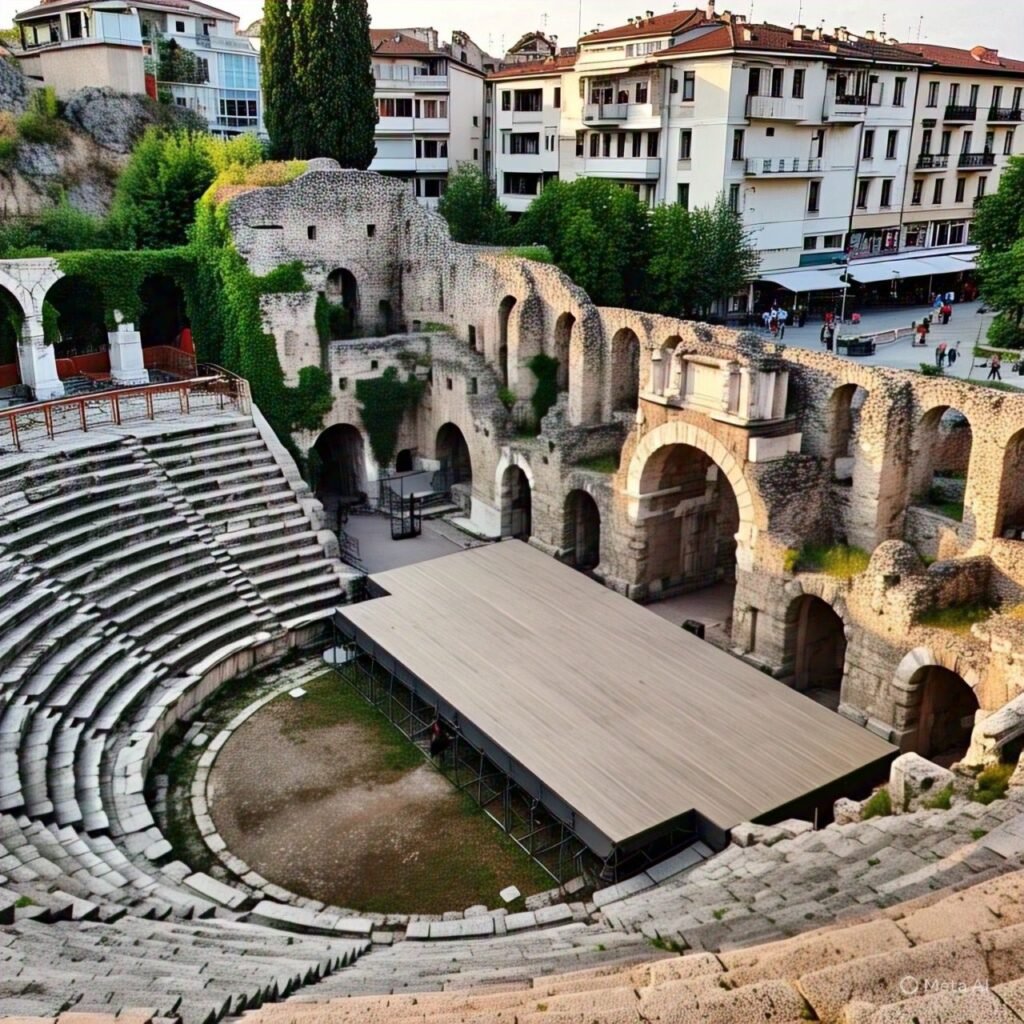
Roman ruins, the oldest continuously inhabited city in Europe, and oddball street art
Plovdiv, the oldest continuously inhabited city in Europe, completes my list of underappreciated European cities. Numerous features are Roman in nature, however recent research has determined that this settlement began between 6,000 and 8,000 years ago.
Roman features include the Ancient Stadium of Philippopolis and the Amphitheater from the first century AD. Wood-carved homes in the Old Town are glistening, frequently in salmon, yellow, and blue hues. You can learn about the city’s past in the different House and Ethnographic Museums.
However, it’s not just about the past. The city’s more contemporary side is well-lit by street art, and Kapana, a hip and imaginative neighborhood, is still expanding. Constructed atop seven hills, this lush city serves as an excellent starting point for exploring neighboring monasteries and national parks.
Although Plovdiv garnered notice during its time as the 2019 European Capital of Culture, it’s safe to say that it didn’t immediately become a top destination. As a result, Plovdiv continues to be among Europe’s most underappreciated cities.
Explore some of the lesser-known locations on the continent if you wish to see more than just the most underappreciated European cities. For more unusual travel, check out my top picks for hidden gems in Europe.